There’s no good rule of thumb for how long your tires should last. Some riders may get a couple of years out of their stock rubber, while others may burn through multiple sets of new tires in a summer bike-park season. Where and how much you ride determines this, but learning to read the wear pattern on your tires will ensure that you’re not only getting the most mileage but also the most grip from them.
Average tire life seems to range from a few hundred miles for the softest of race tires to a couple thousand from a dry-compound XC tire in ideal conditions. Tires will go through a few phases as they age.
As a tire wears, the little rubber nipples will fall off. If you still have these on your tire, they’re likely relatively fresh. As the virgin surface burns off, the tires should come to full grip as they break in. With the cornering knobs sharp and fresh, the handling of the bike will be at its absolute best.
After a few hundred miles, a tire will begin to show signs of wear but should still have sharp edges on most of the knobs. If your cornering knobs still look like they haven’t touched the dirt, you may want to decrease pressure to allow the tire carcass to conform to the ground better. Conversely, if your knobs look like they’ve taken a lot of abuse, you may be using a rubber compound that’s too soft for your conditions or your tire may be under-inflated. Either way, it’s a good reason to try a different setup.
END IS NEARAfter about 500–1000 miles, there will be enough wear that your grip is diminished, especially when cornering and in loose or steep terrain. While tires can be pushed past this wear level, many riders opt to simply replace at this point.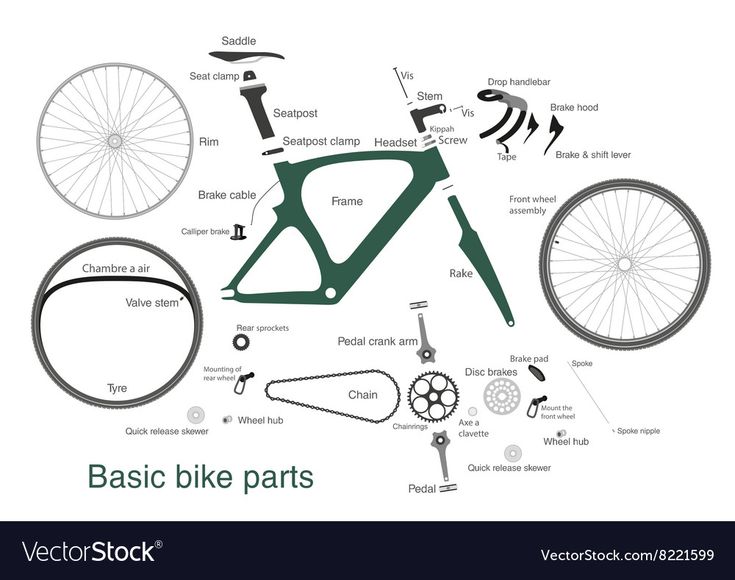 Old tires are more vulnerable to punctures. Moreover, if you’ve plugged a tire to repair a puncture, it’s not worth the increased risk of failure on a future ride.
Old tires are more vulnerable to punctures. Moreover, if you’ve plugged a tire to repair a puncture, it’s not worth the increased risk of failure on a future ride.
Only our absolute favorite tires, ones that have survived our marginal line choices and somehow avoided enough of the sharp rocks to still hold air reliably, are pushed past what we would call the 50-percent wear mark. Beyond this, stretching the life of a tire becomes a balance between thriftiness and performance, and ultimately a gamble on safety and reliability. We’ve been on the losing end of this with both flat tires that left us far from home and crashes that came unexpectedly from a loss of grip. We recommend replacing worn tires before they’re down to the threads.
best mountain bike tiresMountain bike tiresworn bike tiresworn out mountain bike tires
Ron Koch 345 posts 0 comments
Prev Post
TWEED VALLEY EWS RACE REPORT
Next Post
LONG TERM REVIEW: SPECIALIZED STUMPJUMPER EVO ELITE ALLOY
By Tony K | Mountain Bikes
Mountain bike tires wear down slowly over time, and it can be difficult to know exactly when you should replace them.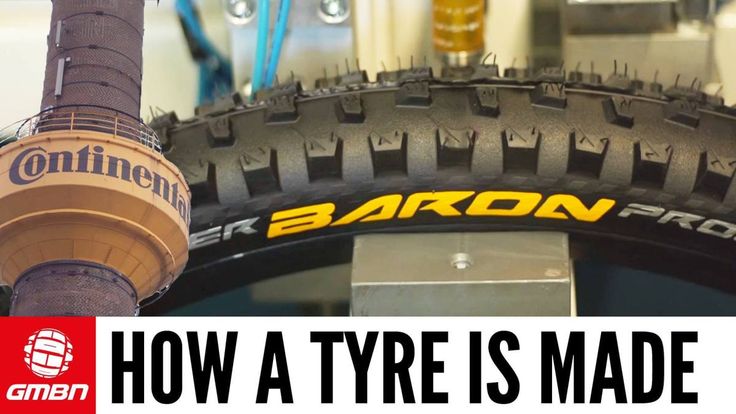 Many times, they are replaced when they still have plenty of life left in them.
Many times, they are replaced when they still have plenty of life left in them.
You should look to replace your mountain bike tires when the knobs in the tread are more than halfway worn down, you can see the threads beneath the rubber in places, the tire has bulges in some spots, the tire won’t hold pressure, or there is excessive cracking in the tire from dryrot.
Aside from the tires not having the same traction and handling as usual, there are some signs of what to look for to know you will have to get new tires in the near future.
Generally speaking, these are the signs that your bike tires are worn and need to be replaced:
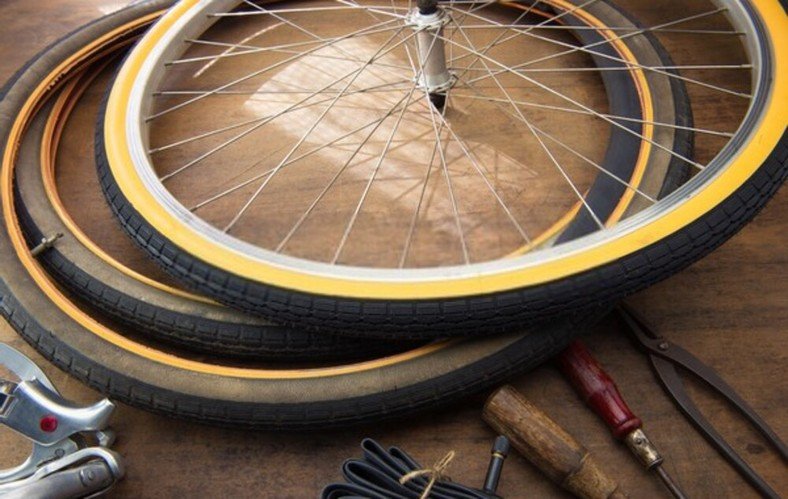
Any one of these is caused to get new tires. It’s just not worth the risk if you’re not 100% sure they’re safe after examining them. Replace tires when it’s time to avoid an accident.
Bike tires never last as long as any of us would hope, but there are some things you can do to get a little more life out of them.

Whether you have mountain bike tires or road bike tires, the same important maintenance guide applies to help get the most out of your bicycle tires and will give you the most time before you need to replace bike tires.
Make sure you check the tires before every ride.
Make sure you are aware of times when the tires slip when they should grip.
Make sure to take note of cracks in the sidewalls and the tires needing to get topped off with air regularly.
Most of these tires fall in the $50-60 range and it’s not worth sliding into a tree or slipping and hitting your face on the handlebars.
If in doubt, replace the tires. Don’t wait until you’re jumping on a trail to worry about if your tires are up to the task. Just that simple.
If the trails you ride are soft dirt then you will get a lot of life out of your tires. If the bike takes turns without slipping, then you’re plenty good.
If the bike takes turns without slipping, then you’re plenty good.
If you ride on either pavement or rocky trails, then your tires are going to take a lot of wear. Roots and sharp rocks will take small chunks out of your tire treads and wear down the knobs very quickly. This type of downhill trails take a lot out of your tires and will noticeably shorten your tire life compared to more gentle terrain.
How many miles you get out of a set of bike tires depends on the tire and where you’re riding your mountain bike. Generally speaking, many tires used in non-extreme conditions can expect around 2,000 miles. If you ride a couple times a week, that’s an average tire life expectancy of around 1.5 years.
| Tire Type | Expect Mileage Tire Should Last |
| Road Tires | 1,000 to 3,000 miles |
| High-End Tires | 2,500+ miles |
| Racing Tires | 1,000+ miles |
| Touring Tires | Up to 4,000 miles |
| Trail Tires | 3,000 miles to 8,000 miles |
Mountain bike tires will typically last for 3,000 to 8,000 miles. If you use the mountain bike on trails with sharp rocks and roots, expect the lifespan to drop radically to perhaps 1,000 miles. If you ride more mild trails like cross country then you should be able to easily get 3,000 miles out of the tires.
If you use the mountain bike on trails with sharp rocks and roots, expect the lifespan to drop radically to perhaps 1,000 miles. If you ride more mild trails like cross country then you should be able to easily get 3,000 miles out of the tires.
Tires like trail tires and touring tires are durable because they often are used on more technical terrain. Things like sharp rocks can radically cut down on how long a tire will last when the terrain is taking chunks out of the tires.
OutdoorGearLab has a nice writeup comparing 24 of the top tires and one of the big factors is tire longevity. Generally speaking the Maxxis line does quite well with a balance of performance and tire longevity. Sad to say I’m a fan of the Maxxis Ardent and it scored a little less by the numbers than I feel by the seat of my pants riding.
So the terrain is a huge factor when you’re talking about how long bike tires will last and how quickly you’ll have to replace them. The average lifespan really depends on the type of tire, how well it is made, and the terrain it’s used on.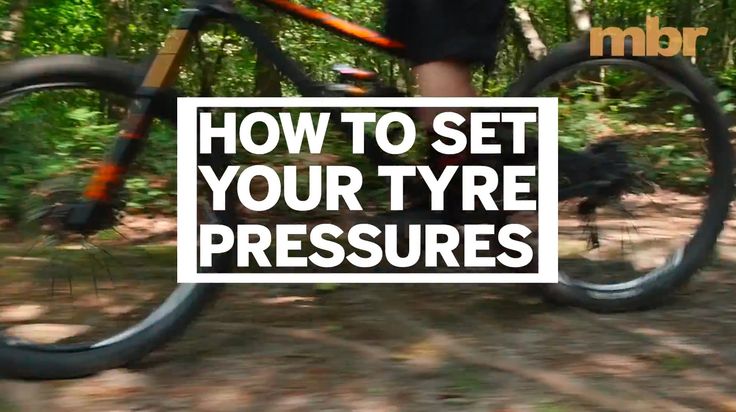
Checking your tires before every ride or at a minimum of twice a week if you ride frequently is the best way to catch problems before they get too big. Prevention is the best way to avoid major issues.
Slowly spin the tires around and look for cracks, debris stuck in the tires like glass, or a loss of tire pressure. Any of these signal tire degradation and it’s best to be proactive and replace them.
Sometimes these things can pop up unexpectedly when you’re out riding. Bringing a tube repair kit and a small air pump should be a normal part of what you bring with you when biking. Sooner or later it happens to all of us and if you’re prepared it’s no big deal.report this ad
While you can get it done at a bike shop, replacing a tire yourself is pretty easy once you do it the first time. The front bike is just loosening a couple of the bolts on the fork to pop off the rim and tire, but the back one has the chain and everything else going to it so it’s a bit more work.
However, I definitely thinking learning how to do it yourself is needed for every mountain biker because if you get a flat while you’re out riding, you’ll have to take off the tire to patch the tube. So learning it at home is much easier than trying to learn it while you’re stranded on a trail.
Here are the basic steps to replacing your mtb tire:

Bike shops can pop off the tire and tube in no time flat. It’s what they do.
Typically mountain bike tires run from $40-$90 for a quality tire, and then the cost of getting it mounted if you’re not doing it yourself.
However, like I said above, learning how to service your own bike is a necessary skill for every mountain biker. So order in the tire, and a new tube (might as well do it at the same time), and it’s something you can easily do at home. Learning to put on a replacement bike tire yourself is a valuable skill to learn.
Typically on mountain bikes, the back tire will wear down before the front tire.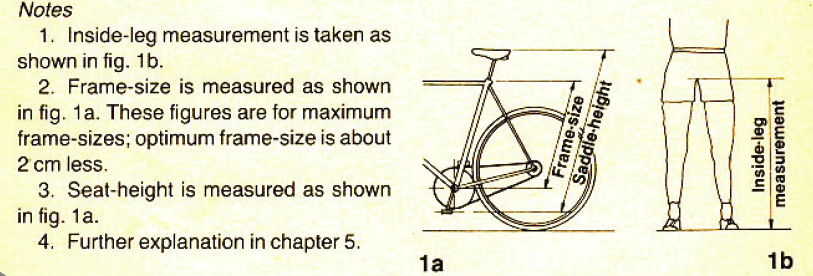
Should you replace just the rear tire or replace both tires?
You should replace both tires and I’ll tell you why. While the rear tire has tread worn down, the front will still look fairly new.
However, the front is taking all of the hits on the road, a majority of the debris, and much more. The front tire is not as new as it seems.
Unless I’m very sure the front tire is in great condition, I change both of my tires at once (or the front tire not long after the rear), and I save the old front tire as a spare.
It’s a little bit like how you change both headlights at once in a car once one bulb goes out … they both take the same wear and tear and usually the other is going out soon after.
I am a mountain biker among other things and I enjoy writing about both topics I know but also about new things about mountain bikes that I learn. If you enjoy tackling trails and tracks and everything in between, then this is the blog for you.
Unfortunately, not every bicycle tire is able to cover its entire resource. And again, unfortunately, there are many reasons for this. A worn out tread, for example, on MTB tires, is not a universal way to assess wear, although it is one of the main ones.
However, there are also tires without a toothy tread - road slicks, for example - what to do in this case, how to understand when to change tires?
Just about. Let's figure it out.
By the way, if you think we missed something, please share your thoughts on our Facebook page.
Perhaps the most frustrating thing is to replace a tire due to its damage during a collision with a curb, tree roots or something similar. So both a new tire and a new rim can go to the trash.
In most cases, the camera is broken if you have one. A so-called snake bite is formed, after which the camera cannot be repaired. It occurs during severe deformation when hitting an obstacle, when the tube is clamped between the tire and the rim.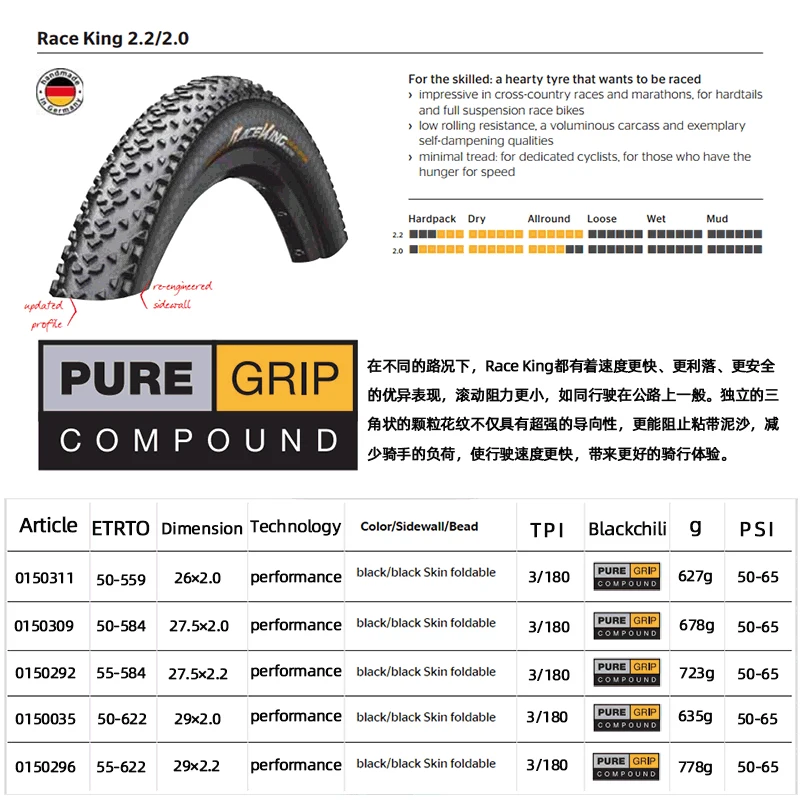 And it's good if only the camera is damaged. In some situations, the rim does not withstand, it bends, cracks, its edges are jammed, the spokes shoot out or weaken ...
And it's good if only the camera is damaged. In some situations, the rim does not withstand, it bends, cracks, its edges are jammed, the spokes shoot out or weaken ...
And, since we're talking about tires here, it's worth mentioning the damage to them. Impact on them by the rim entails the destruction of the inner layer of rubber and/or cord on the sidewalls. The inner coating of the tire cut by the rim will begin to let air through if it is tubeless. A simple patch, placed from the inside, solves this issue.
The cut cord, unfortunately, cannot be treated. Its damage, most likely to the naked eye, may not be noticed immediately, but it will certainly manifest itself in the future. He convicts himself by the formation of bumps on the surface of the tire. People are trying to repair such a malfunction, but any of the methods does not provide an adequate level of safety during further operation. Here it is better not to “play with fire” and come to terms with the upcoming new thing.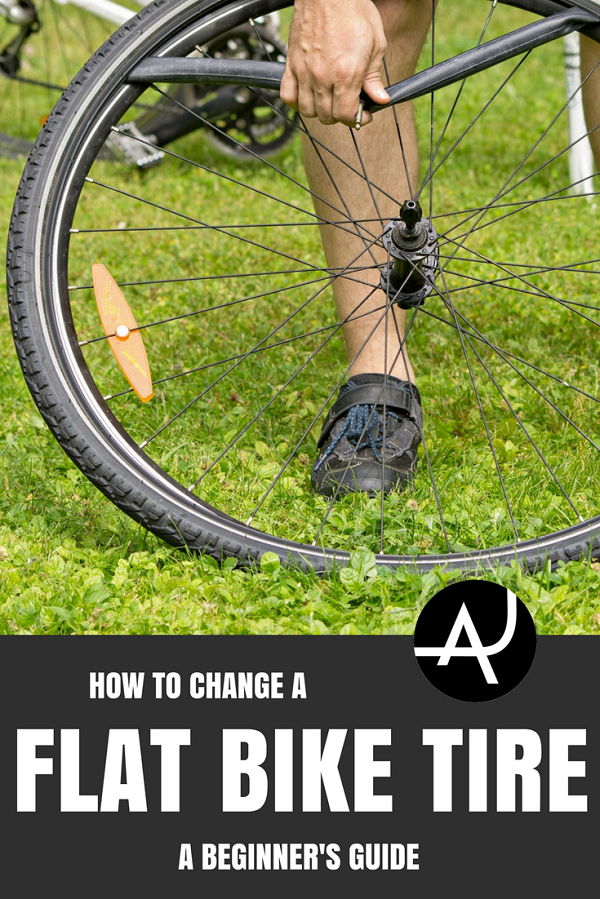
In any case, if you didn’t even get a clear blow to the wheel anywhere, but felt some kind of beating or a clear change in the geometry of the tire in motion, then these are the first (and sometimes the last) bells that something is wrong . It is better to stop and inspect the wheels for various kinds of damage (bumps, protruding threads, cuts, tears, delaminations).
It is of course possible to prevent unwanted costs. To do this, you need to regularly check the pressure in the wheels of your bike. The lower it is, the higher the probability of breakdown. Excessively high pressure, by the way, can also cause the cord to break or the rim to break. So, don't be zealous. Before inflating the wheels, carefully study all the inscriptions on them, the manufacturer always indicates the recommended minimum and maximum values there.
And yes, side cuts, ply lines and snake bites are more familiar to road bike owners, as the tires are especially thin for the sake of light weight.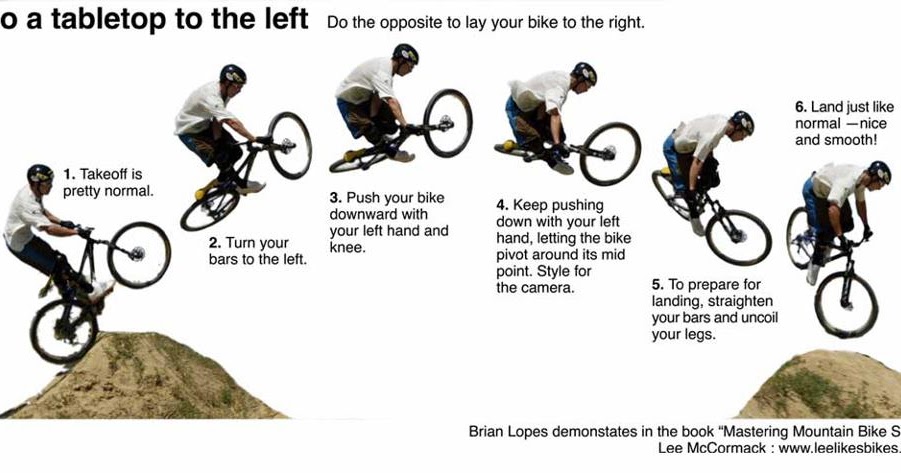
Absolutely any cyclist can see the wear of an MTB tire. Everything is simple here - the tread has worn off, which means the tire must be replaced. Moreover, it is not necessary to wait until it is erased to an absolutely smooth state. For its native element, such a tire becomes unusable much earlier, when the hook becomes small. If the bike rides in urban conditions, then the lack of a tread does not interfere with the hook, but only has a positive effect on it. After all, the area of \u200b\u200bcontact with the surface of the tire increases. However, other factors are beginning to come into play. Too thin a layer of the treadmill is very vulnerable, there will be more punctures. Even the anti-puncture layer can no longer cope with its task. That is, an MTB tire turned into a slick becomes simply unsuitable for further use.
However, there are also MTB slicks that come straight from the factory with a smooth tread. It is better to get such tires and fully enjoy the absence of a toothy tread in the city.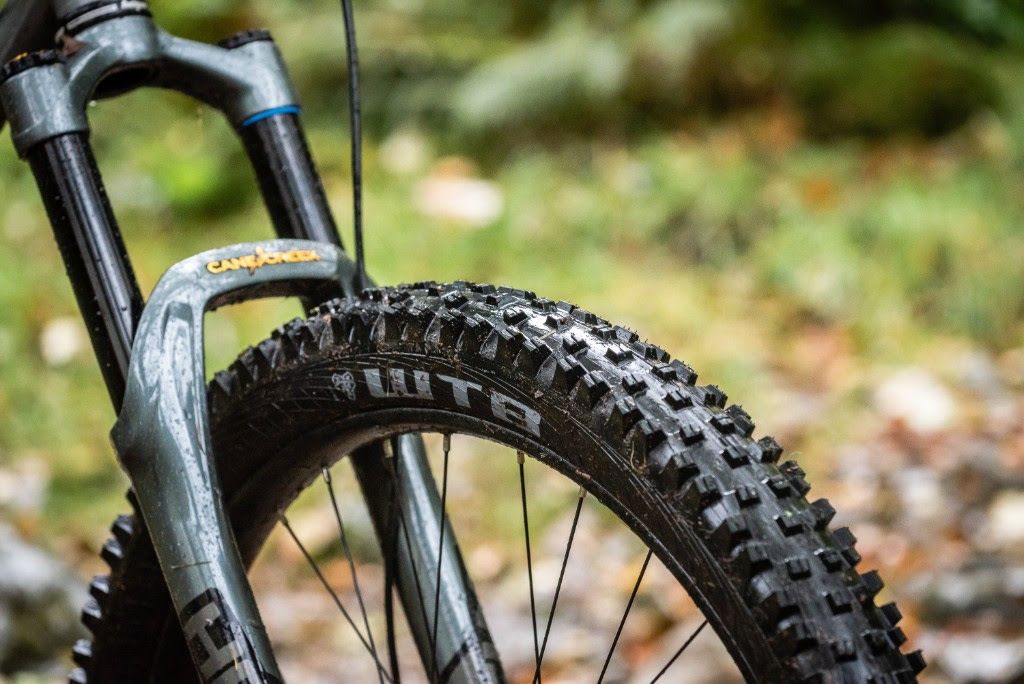
How to determine wear in this case?
Good question, which brings us to road tires. Continental, for example, puts special round marks (recesses) on the treadmill. They can be used to monitor the gradual wear of the rolling surface. If they are absent, or their depth has become insignificant, then a replacement is nearing.
Other manufacturers are following the same path, their marks may differ from each other, but one thing remains in common - they disappear as the tire wears out. By the way, the applied pattern on the sidewalls of a road tire, smoothly passing to the working surface, also plays the role of a wear indicator, although not the most reliable, but still. Rubber after all is erased more in the middle part.
Yes, it is in the middle and often this leads to the formation of a “square” profile, which is also a signal for replacement.
As for MTB slicks, I have never seen such marks on such wheels. I drove until the threads began to climb out or the anti-puncture layer appeared.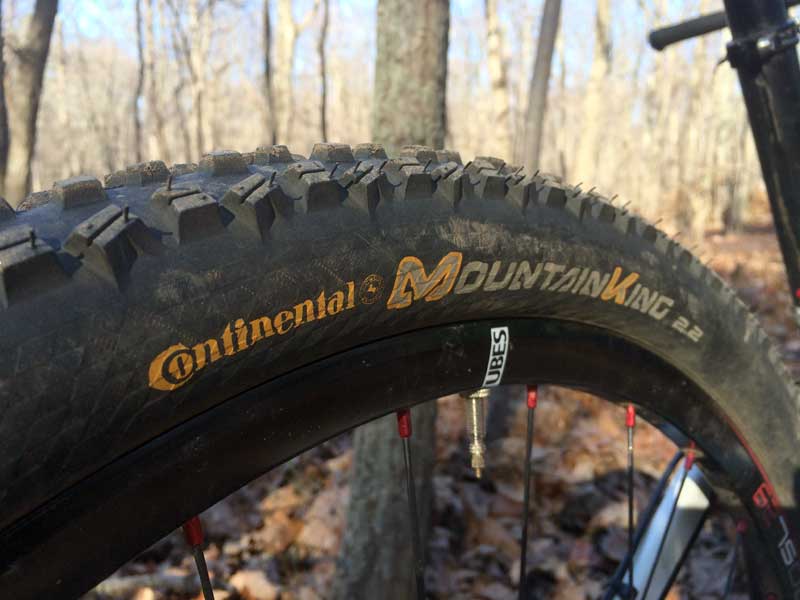 Different manufacturers have it in different colors, but if you have already seen it (or cord threads), then the next trip should take place just for the tires.
Different manufacturers have it in different colors, but if you have already seen it (or cord threads), then the next trip should take place just for the tires.
Yes, I have already mentioned them. By itself, an ordinary puncture causes some damage to the tire, but is not critical for further use. Of course, we are talking now about minor punctures with thorns, small pieces of glass, self-tapping screws, nails and glasses. No, it didn’t seem to you) there were such cases in practice. In general, there are quite a few items that can attack your rubber, but in most cases this does not happen often. Especially rarely punctures occur in the presence of an anti-puncture layer.
So, if the frequency of punctures has increased and comes from the smallest pieces of glass or pebbles, then this is a clear sign of excessive wear. This is due to the thinning of the working surface of the tire, the only way to correct the situation is to replace it. By the way, even the presence of an anti-puncture layer is not a panacea; with a thin layer of the treadmill, its effectiveness decreases.
By the way, even the presence of an anti-puncture layer is not a panacea; with a thin layer of the treadmill, its effectiveness decreases.
The bead is a part of the tire that contains Kevlar fibers or steel wire, popularly called the “cord”, which is fundamentally wrong. If, when inflating a wheel, the tire comes off the rim, then, of course, there is no point in playing with it, it goes to the scrap, and you go to the store. The point here is the damaged board, which is almost impossible to track visually. Well, if it has obvious damage (rust, for example) or a cut, then there is no need to talk about the applicability of such a tire on a bicycle. I don’t even know if it’s worth saying that such rubber tends to be sorted out in motion.
All this means that saving on tires is not desirable. They cost no more than money. It also makes no sense to resort to frankly cheap options, since in the end, the operation of a bicycle will cost much more.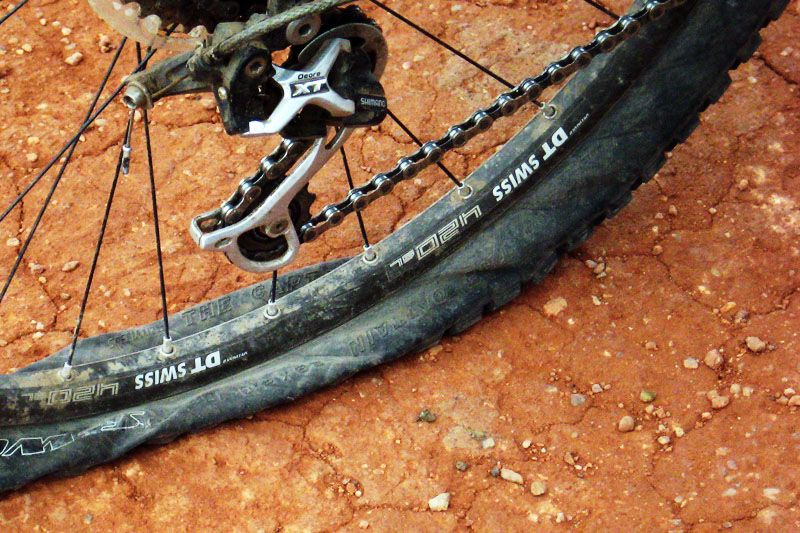
We have already mentioned cuts and penetrations of the sidewalls by the rim. And now we want to pay attention to another nuance associated with them. The sidewalls of any tire become unusable when the bicycle is operated at reduced pressure. Of course, if you put a child weighing 15 kg on a bike, then the minimum value can be lowered, but up to a certain limit. The sidewall should not be excessively deformed, otherwise its gradual destruction and increased wear of the chamber will occur. The latter leads to the replacement of the chamber, since its walls worn into dust will simply tear when trying to pump up after repair.
The second point about the sidewalls concerns bike storage. So it happens that sometimes the bike stands for a long time without movement and its wheels go down. Prolonged exposure to such a deformation does not bode well, the rubber cracks, the cords are damaged. This effect is especially pronounced when the bike is not stored in a warm and ventilated room.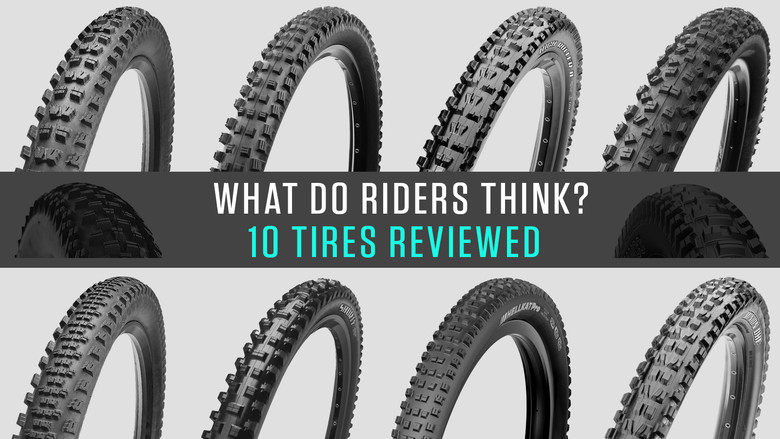 Then the entire sidewall is covered with numerous cracks, and the rubber loses its properties. That is, it makes sense to occasionally visit a bike with a pump. At least once a month to keep his wheels running.
Then the entire sidewall is covered with numerous cracks, and the rubber loses its properties. That is, it makes sense to occasionally visit a bike with a pump. At least once a month to keep his wheels running.
The front tire on any bike wears out much more slowly than the rear. Many cyclists prefer not to burden themselves with extra costs and simply move the rear tire forward and the front back.
Well, this seems to be the perfect way. But, alas, it is not.
Installing more worn tires on the front wheel (both highway and MTB) entails a significant change in handling. In road racing, “square” tires are unlikely to behave better in corners than round ones. In MTB bikes, we are talking about a tread, the presence of which on the front wheel is very critical. After all, it is quite simple to deal with a slippery rear wheel, but with the front one it is much more difficult, and more often it is simply impossible.
Full name
Borik Vladimir
Passionate cyclist since 2014. He could not stand it when the bike made extraneous sounds in motion, which made him go over everything, re-grease and renew it many times. He likes to delve into the subtleties, therefore, numerous bulkheads of his bike later turned into a job as a bike mechanic. I went from Shimano Acera to Comance Tomahawk through SLX to XTR to Specialized S Works, and then just switched to a budget road bike on Campagnolo Xenon 10 equipment. Kuyalnik 2019 bike marathon (MTB) behind-year, where Light took 5th place on the route. Currently remains an active bicycle user and continues to deepen his knowledge in this area.
tires. The service life of the bicycle, the speed of riding, the degree of tire wear, safety, control of the two-wheeled friend depends on how the wheels are inflated.
The service life of the bicycle, the speed of riding, the degree of tire wear, safety, control of the two-wheeled friend depends on how the wheels are inflated.
Many cyclists believe that inflating the tires is only necessary for a good bike ride. However, flat tires have a wider area of contact with the road, which means that grip will be better, but it will be very difficult to accelerate to a speed of 30-35 km / h on such tires.
When inflating your tires, you should always take into account the type of terrain or surface you will be driving on. If the walk is supposed to be on an asphalt road, the tire pressure of the bicycle should be close to the maximum allowable value. Elastic wheels on a flat surface will provide a smooth rolling and high speed of movement.
For cross-country riding with unpaved paths, it is better to set the tire pressure to medium tolerable, so that you can ride long distances in comfort and convenience. At high pressure, the grip of the wheel with the road will be minimal, respectively, all holes, pebbles, and bumps on the road will be sensitive. And with flat tires, the likelihood of damage to the wheel or puncture of the chamber increases.
At high pressure, the grip of the wheel with the road will be minimal, respectively, all holes, pebbles, and bumps on the road will be sensitive. And with flat tires, the likelihood of damage to the wheel or puncture of the chamber increases.
In order to protect yourself on the road, as well as to keep the bike or its individual parts intact, you need to know exactly the lower and upper limits of permissible values, to what pressure the bicycle wheels can be pumped.
Information about tire pressure gives you an advantage when cycling:
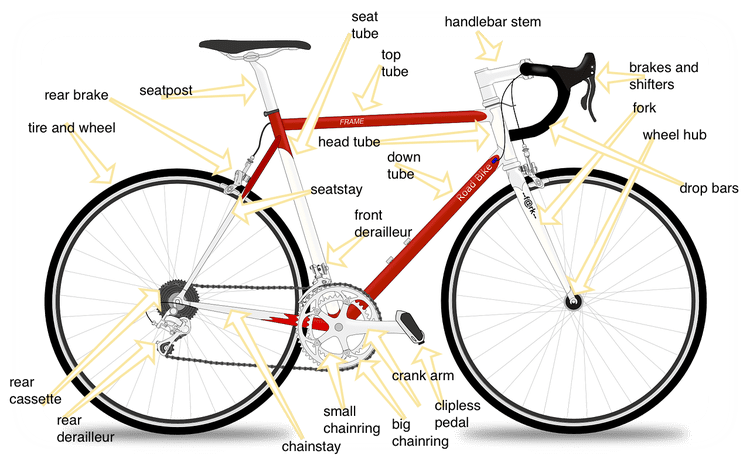
Forget the old "old-fashioned" way to check the wheel with your fingers. No need to rely on tactile sensations, trying to feel with your hand the degree of rubber penetration on the tire. The air leaves the wheel gradually, through the pores in the rubber. Within 2-3 weeks, the pressure decreases by 0.1-0.2 atmospheres, but you cannot determine this with your fingers. The exact value at any time will help determine the pressure gauge that every cyclist should have in his arsenal. With its help, it is simple, with a minimum error, the level of pressure in bicycle tires is measured. A pump with a pressure gauge (floor or manual) will become an indispensable tool for cyclists.
There are three standard values in which bicycle tire pressure is measured.
kPa = 14.504 PSI
All these units are used to some extent - in different countries, by different manufacturers.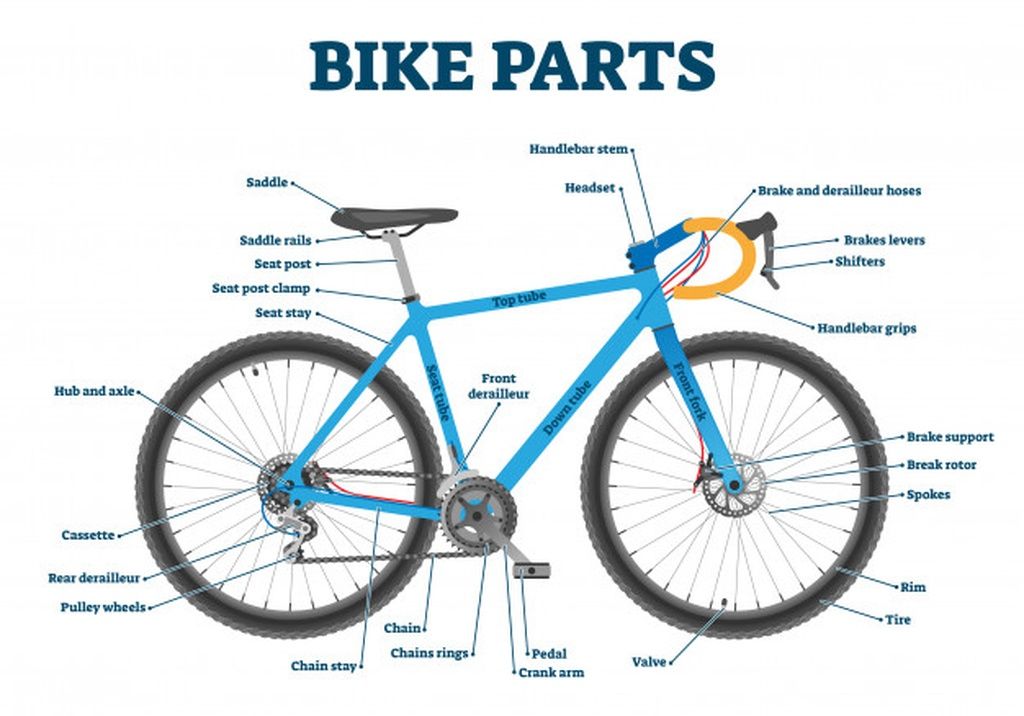 For residents of Russia and the post-Soviet space, the change in bars is more familiar, since this unit is clearly associated with the pressure of the 1st Earth's atmosphere at ocean level. In America and Western Europe, a popular unit is PSI, as they actively use pounds and inches in measurements. Pascals are the least used unit of measurement, but the most modern. Some bicycle manufacturers write data on the wheels about the allowable pressures in all three systems.
For residents of Russia and the post-Soviet space, the change in bars is more familiar, since this unit is clearly associated with the pressure of the 1st Earth's atmosphere at ocean level. In America and Western Europe, a popular unit is PSI, as they actively use pounds and inches in measurements. Pascals are the least used unit of measurement, but the most modern. Some bicycle manufacturers write data on the wheels about the allowable pressures in all three systems.
Manufacturers indicate on the sidewall of the tire how many atmospheres to pump the bicycle wheels. Specifies the range within which the owner of the "iron horse" determines the desired values, depending on the specific factors of riding his bike. Values in the range are labeled from min to max, in two or all three dimensions. Numbers up to 10 are atmospheres (or BAR), tens-hundreds are PSI, and six-digit values \u200b\u200band with the prefix “k” / kilo are Pascals.
When inflating a tire, you must strictly follow the manufacturer's recommendations and try not to go beyond both the minimum and maximum pressure levels indicated on the tire.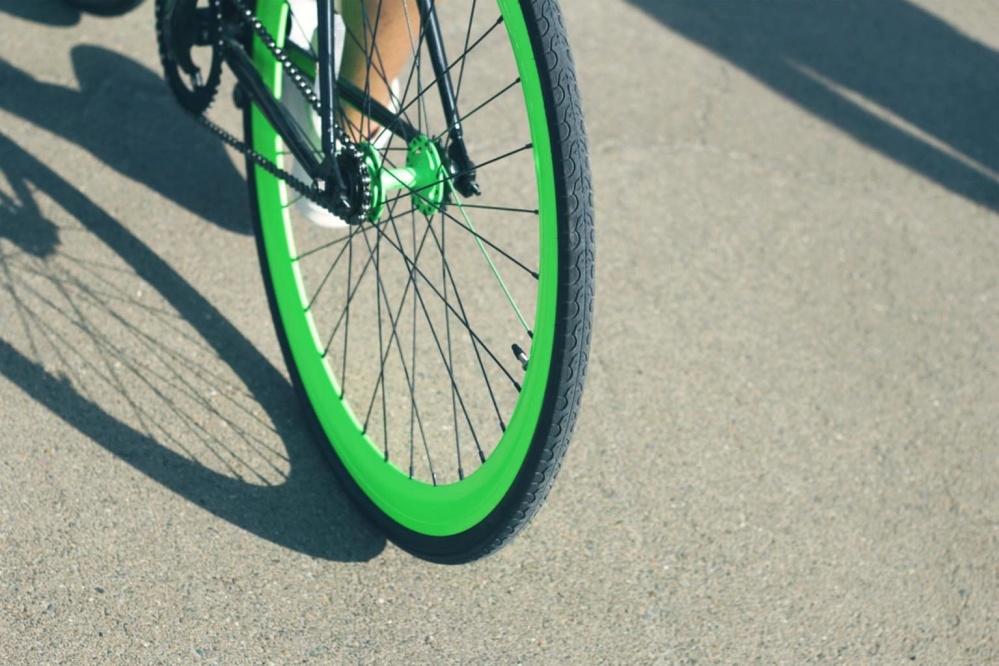 Moreover, it is better to leave a small margin of 0.2-0.5 BAR, both in one direction and in the other, so that the tire does not burst.
Moreover, it is better to leave a small margin of 0.2-0.5 BAR, both in one direction and in the other, so that the tire does not burst.
The pressure in the wheel is kept by the tire, not the tube, so there is no single standard for its value. There are several significant factors that determine how much you need to pump the wheels on a bicycle.
The type of tire is determined by the surface of the track on which the cyclist will predominantly ride. Accordingly, the level of inflation of the bicycle wheel will be different. There is a direct dependence on the roughness of the tread and the width of the wheel - the more lugs and the wider the wheel, the lower the pressure should be. Empirically, cyclists quickly determine how many atmospheres should be in the tires of their bicycle
Many cyclists do not realize that air temperature affects the pressure level in bicycle tires.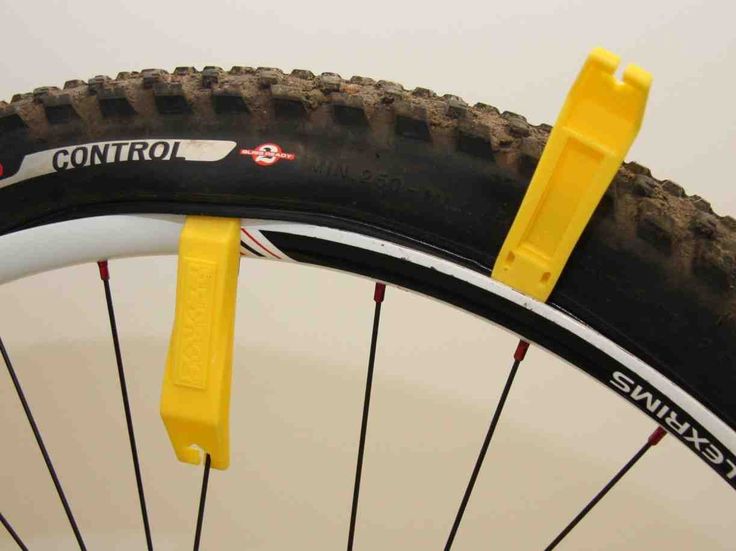 From the course of school physics, we recall that when heated, bodies expand. This means that in hot sunny weather, the pressure inside the air chamber will increase without additional pumping. Conversely, on cold winter days, a decrease in tire pressure is quickly felt due to low temperatures. So, when going for a bike ride in the cold season, the pressure indicators need to be adjusted a little higher than usual, and in the summer heat, let the air out a little. It is worth noting that when going on a bike ride, you should always take into account the weather conditions.
From the course of school physics, we recall that when heated, bodies expand. This means that in hot sunny weather, the pressure inside the air chamber will increase without additional pumping. Conversely, on cold winter days, a decrease in tire pressure is quickly felt due to low temperatures. So, when going for a bike ride in the cold season, the pressure indicators need to be adjusted a little higher than usual, and in the summer heat, let the air out a little. It is worth noting that when going on a bike ride, you should always take into account the weather conditions.
It is important to consider the load on the bike created by the weight of the rider, especially the fact that most of it is on the rear wheel. Therefore, the degree of its pumping should be slightly higher than the front, the optimal difference is 10%.
To calculate the optimal tire pressure for a bicycle, given the weight of its rider, you can use the table:
Rider weight (kg) Pressure (atmosphere) Pressure (PSI)
The nature, riding style and type of bike also affect tire pressure. Buyers who prefer an active pastime often opt for mountain bikes with 26-inch wheels, which ride well both on city streets and in rough terrain.
Buyers who prefer an active pastime often opt for mountain bikes with 26-inch wheels, which ride well both on city streets and in rough terrain.
To understand to what pressure to inflate the wheels of a bicycle, it is necessary to take into account the features of both the bike itself and other, at first glance, weightless factors. For example, weaving threads on a tire, rim thickness, driving style. The likelihood of a tire coming off a wide rim is much less than a narrow rim, because a wider rim will hold the tire better than a thin one. Mountain biking already by its name suggests the presence of a difficult surface on the track, with possible obstacles and bumps. The driving style is more aggressive than on a smooth, calm trajectory, it obliges you to increase the tire pressure to a level slightly less than the upper limit.
The diameter of the wheel will also influence the selection of the optimal pressure value, since the larger it is, the higher the volume of air pumped will be.